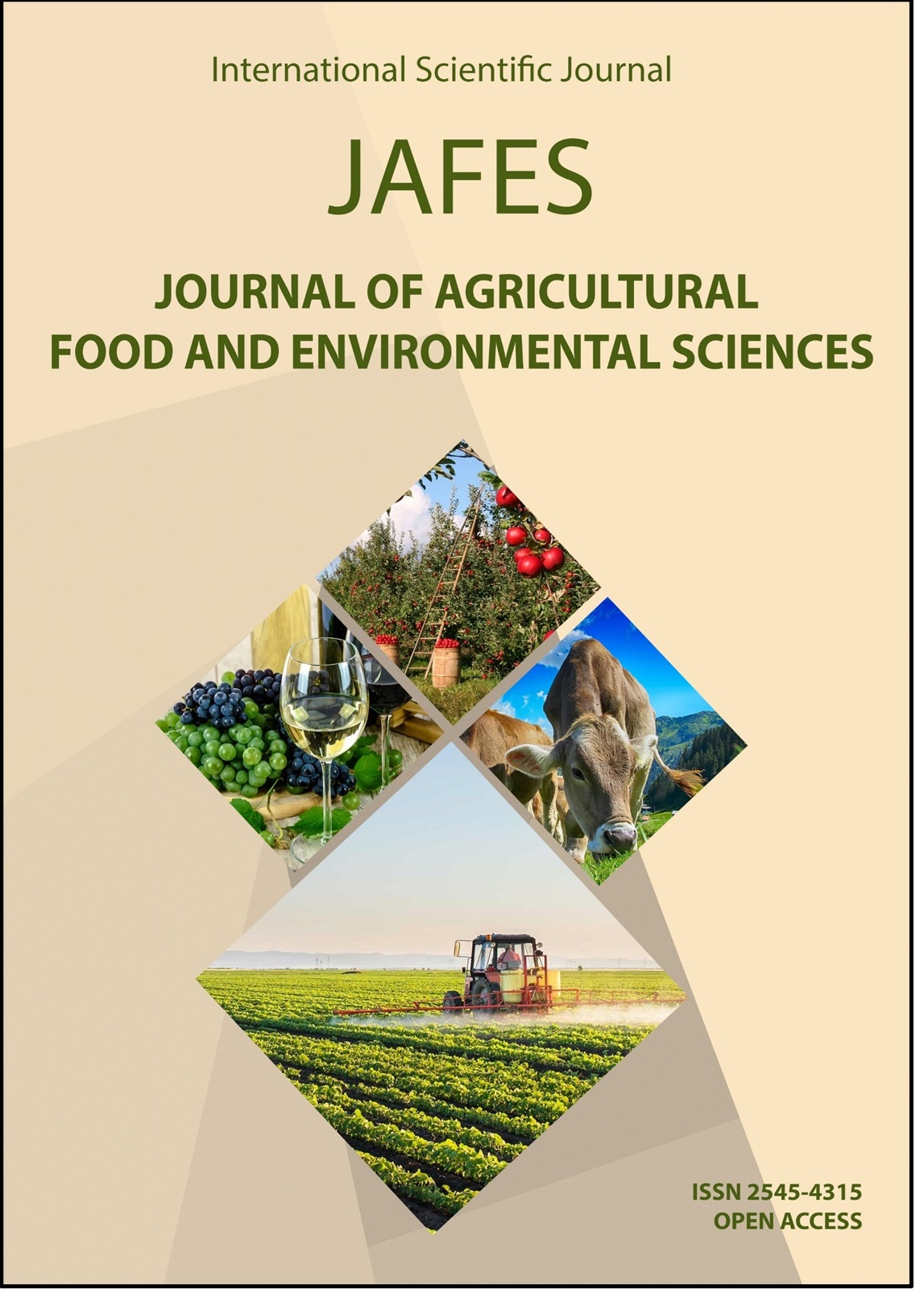DESCRIPTION OF THE MORPHOLOGICAL AND TECHNOLOGICAL CHARACTERISTICS OF THE PLANT GOJI BERRY
Клучни зборови:
Goji, cytogenetic, antioxidant, germination, fermentationАпстракт
Goji berry is relatively a new plant introduced in the Republic Macedonia. It is prevalent on limited small plantations to a controlled breeding conditions and providing a yield which is immediately placing on the market and awakens interest in further expansion of its production. This plant (Lycium barbarum or Lycium chinense), belongs to the family Solanacea and characterized by very favorable chemical composition of the fruit with high nutritional, energy and antioxidant value. Therefore, this plant is a large application in dietary recommendations for the prevention of many diseases and as a natural organic product for general strengthening of the human organism. From another aspect, goji berry requires minimal growing conditions aimed at irrigation and treatment with pesticides and it belongs in adaptable resistant plants for organic production. Also, this plant has good genetic predispositions, easily reproduced and has favorable characteristics; cytogenetic status, germination of seeds, regenerative ability, ability to clonal selection and in vitro - propagation. Its morphological construction is easy for examination of scientific purposes. Considering that in the fruit of this plant has similar chemical substances as it has in the grape, but enormously more, in our research experience made by fermentation (actually vinification) of the two types of Goji berries - sweet and
bitter. The goal was to get fermented products similar to wine, but with improved chemical composition and strong antioxidant power.But after analyzing the obtained product, it can be concluded that by increasing the quantity of antioxidant substances during the vinification, however sensory evaluation of the final product is low. Goji berry should be consumed in fresh or dried form or may be a supplement of some special wines (with high sensory evaluation and strong antioxidant substances).
Референци
Bennett, M.D., Price, H.J., Johnston, J.S., 2008. Anthocyanin inhibits propidium iodide DNA fluorescence in Euphorbia pulcherrima: implications for genome size vari- ation and flow cytometry. Ann. Bot. 101, 777–790.
Bernardello, G., Stiefkens, L., Las Penas, M.L., 2008. Karyotype studies in Grabowskia and Phrodus (Solanaceae). Plant Syst. Evol. 275, 265–269.
Jianjun Chen, Xiaoli Liu, Linyao Zhu, Ying Wang. 2013. Nuclear genome size estimation and karyotype analysis of Lycium species (Solanaceae). Scientia Horticulturae, 151, 46-50
Miller, J.S., Venable, D.L., 2002. The transition to gender dimorphism on an evolutionary background of self-incompatibility: an example from Lycium (Solanaceae). Am. J. Bot. 89, 1907–1915.
M.Vucinic, V. Pesic (1997) Manipulation of animal and plant genomes and genes in agriculture. Ed. Books, University of Belgrade
R. Dursun, Y. Zengin, E. Gündüz, M. Içer, H. M. Durgun, M. Dağgulli, I. Kaplan, U. Alabalik, C. Güloğlu, The protective effect of goji berry extract in ischemic reperfusion in testis torsion. Int J ClinExp Med, 8(2), 2015, 2727-2733.
Seo, G.S., Lee, J.Y., Kim, S.Y., Kim, J.K. & Han, G.H., 1986. The effects of fertilizer application level and top-dressing method on the yield component and fruit yield of Lycium chinense Mill. Korean Journal of Crop Science (Korea R.) 31(4): 465-469.
Stearn, W.T., 1972. Lycium L. In: Moore, D.M. (Editor): Solanaceae. Flora Europaea. Vol. 3. Cambridge University Press, United Kingdom. pp. 193-194
Yeung, K., Miller, J.S., Savage, A.E., Husband, B.C., Igic, B., Kohn, J.R., 2005. Association of ploidy and sexual system in Lycium californicum (Solanaceae). Evolution 59, 2048–2055.
Zhou, L., Leung, I., Tso, M.O., Lam, K.W., 1999. The identification of dipalmityl zeaxan-thin as the major carotenoid in Gou Qi Zi by high pressure liquid chromatography and mass spectrometry. J. Ocul. Pharmacol. Ther. 15, 557–565.
Zonneveld, B.J.M., 2010. Genome sizes in Hepatica Mill: (Ranunculaceae) show a loss of DNA, not a gain, in polyploids. J. Bot., http://dx.doi.org/10.1155/2010/758260
http://www.genres.de/eccdb/vitis
https://www.ncbi.nlm.nih.gov/books/
GWRDC innovators network
website www.gwrdc.com.au
www.statisticshell.com



